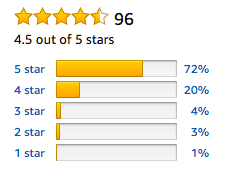It is high art. Writing a book.
Interestingly, making a shirt was high art, till garment factories came along. Making a shoe was high art, till systems came along that churned out as many shoes in a day that artists (rather, artisans) would do in ten years. Heck, ‘making’ a book (as opposed to writing it) was high art before Gutenberg came along.
Of course, the idea is blasphemous. How can you compare writing a book to shoe making? Almost like saying god is a stone, or a marble slab in a particular direction, or a wooden cross.
Ok, artistic indignation aside, let’s look at the industry. Trade publishing is struggling. People are reading more, on computer as well as on paper and yet most published books don’t sell beyond three digits. New winners are few and far in between. It takes a year plus for the book to hit the market after done writing. Writers make peanuts. Publishers don’t spend on marketing and writers lack the skill. Structurally, at 8-12% royalty, not much incentive for the average joe writer to spend on marketing. We are pushing smart people out of writing books.
From publisher’s side, it is spray and pray. Only, sprays happen too few times and far in between. And with a directionless writer occasionally following the beats of his heart and at other times, trying to ape what has worked, publisher has very little control to use her industry knowledge to impact the sprays so that their probability of being a winner successively increases.
But the industry has plenty of positives. People still read books and they will continue to read on paper at least till the school system relies on paper books. Shift from paper to fully digital content in schools hasn’t even happened in the US, so we are covered here for twenty years at least.
And people read what they see or hear about. The idea is to find new winners. How? When the cost of new product introduction is low, the key is to cut the time for new product introduction. How? The way it has been done in shirt or shoe making, cooking, furniture making – by making a process.
TV has done it with Content Heads conceptualising an idea and then assembling a Writer’s Room, a Showrunner and the show being directed by a team of directors instead of a lone, magical mad genius. And it has created art at a massive scale which has been commercially successful too.
James Patterson has done it in books. His fiction sells in massive numbers though the constant criticism is, his work isn’t aesthetically pleasing or profound. But then, the utility of his model is just to show the direction. There could be other ways to build a process that don’t dumb down art – Game of Thrones, Breaking Bad and countless other TV shows show us it is possible to have an integrated process and yet create deeply engaging stories that work for many people.
The question is, do we leave books (here, fiction) to die prematurely or do we think of faster, better ways to create books that reach more readers. Do we continue the spray and pray or do we work to build frameworks to better integrate market intelligence, creative work, and production?
Is it time for the books to have their own Writer’s Room?


